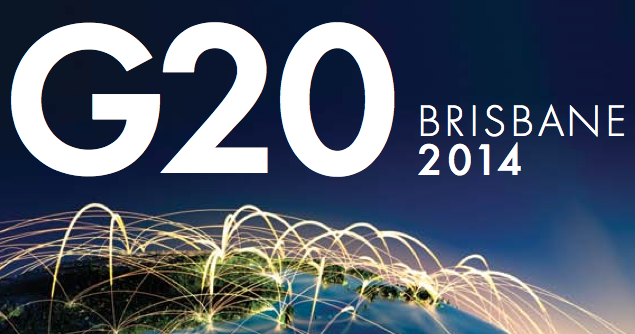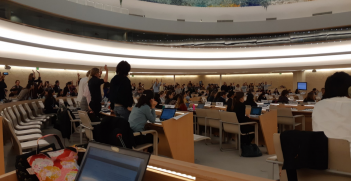The G20: Beyond Brisbane

How does the G20 remain relevant in the future? Avoid overlapping with existing multilateral forums, focus on one core issue at a time and form taskforces to tackle the various Millennium Development Goals, suggests Renmin University’s He Weiwen.
A reasonable way to assess the future of the G20 is to trace back its origin, past and present. The G20 platform for Financial Ministers and central bank governors was launched in 1999, with the direct objective of fighting the Asian Financial Crisis and its aftermath. It was then upgraded to the G20 Summit after the Global Financial Crisis (GFC) in 2008, with the aim of pooling the world’s most powerful resources to fight the worst financial crisis and economic recession seen since the Great Depression. The question now is: how should the G20 focus its efforts in the future?
Contribution and Evolution: a hindsight look at the G20
The G20 mechanism was effective on the whole during 2008-2009. For example, during the Washington Summit, G20 members reached a quick consensus to work together in fighting the GFC. Then, at the Pittsburgh Summit, they set the framework of “strong, sustainable and balanced global growth”. And by the time the London Summit rolled around, they even agreed on an additional supply of $1.1 trillion in liquidities, an extra $500 billion to the IMF, $250 billion for the IMF Special Drawing Rights (SDRs), $250 billion for trade financing and $100 billion for multilateral development banks. So, it is fair to say that G20 did make historical contributions to the global economy in avoiding an otherwise much worse and longer setback.
Nonetheless, the schism between developed and emerging economies became more apparent as the US Federal Reserve’s (FED) move to “taper off” quantitative easing worked to change cross- border capital flows, which in turn led to the depreciation of several G20 emerging members’ currencies. The Brisbane Summit is now faced with an arduous task: it must continue to address the central issue of growth and employment amid slightly slower world growth prospects and address the complicated issues of world financial stability and imbalanced recovery.
While its effectiveness in improving in-depth multilateral financial architecture might be weakening, the G20 mechanism is expanding horizontally into new areas: these include energy, climate change, commodity prices, the UN Millennium Development Goals (MDGs), trade and investment and anti-corruption. Along with the Summit and ministerial meetings, the G20 has also developed various outreaches such as Civil 20 (C20), Business 20 (B20), Labor 20 (L20), Think 20 (T20) and Youth 20 (Y20).
Limitations of the G20 Process
The G20 is a crisis-responding mechanism which brings together the leaders of over 90 per cent of the world economy to come up with top-level solutions that cannot be found within the existing multilateral forums. However, the G20 mechanism is not an official institution as it does not have a law-based mandate. While it overlaps existing multilateral mechanisms – particularly the IMF, World Bank, WTO and UN – reforms within the current international monetary system, international financial governance and international financial institutions can only be decided by the other relevant institutions, not the G20. For example, in terms of decision-making, the G20 has repeatedly appealed for quotas and voting share reforms within the IMF – but then, the IMF doesn’t have the final say either as the US Congress has not approved the changes. So while the Leaders’ declaration at the Los Cabos Summit recognised the “spillover” effect of unconventional monetary policy changes, in the end, the FED just followed its own way.
Secondly, the G20 has not paid enough attention to the differing economic development and capabilities of different members, especially between developed and emerging members. Unlike other international institutions which normally accept groupings, such as the Group of 77 within the UNCTAD, the G20 regards all 20 members as a whole, which could prove to be counter-productive in the long run. Thirdly, the G20 has partially neglected the poor countries of the world. Although 85 per cent of the world’s GDP is covered by G20 members, the remaining 15 per cent is covered by over 170 nations, mostly small and poor, including all the least-developed countries (LDCs). These represent not only the vast majority of the world, but also the most critical and difficult of the world’s economic and social issues – such as the Millennium Development Goals (MDG), climate change and food security. While the G20 does invite small countries to each year’s Summit, they are only ever a handful.
Future of the G20: Brisbane and Beyond
Despite all the problems, it is well expected that the G20 will remain an indispensible, sustainable, leading mechanism in ensuring strong, sustainable and balanced world economic growth, and even serve as a leading forum in building a new world economic order. The fundamental factors behind this are the future trend of globalisation and the improvement of world economic and financial governance. Both need new mechanisms beyond existing national and multinational institutions.
Much like national governments, all the existing multilateral mechanisms have their own limitations when it comes to confronting world economic issues. The Doha Round, for example, had been in a deadlock for over a decade. It has been most difficult for trade ministers to strike a deal within the WTO as the final say still remains with national leaders. Nonetheless, the Saint Petersburg Summit declared a shared political will among G20 leaders to address this urgent issue and it accelerated the conclusion of an “early harvest agreement” in Bali in 2013 – so overall, the future outlook for the G20’s effectiveness is optimistic.
Immediate Strategies to Adopt
The 2014 G20 Financial Ministers and central bankers meeting in Sydney held in late February proposed a two per cent hike in world economic growth over the next five years – an unprecedented and encouraging move that indicates the G20 is working to guide the world economy. So, in order to enhance its role in the world further, three key suggestions should be kept in mind:
- The G20 should refrain from overlapping with existing multilateral mechanisms. Leaders, supported by their ministers and other functional-level resources, should only take on the most crucial issues that neither the existing multilateral mechanisms nor the individual national governments are able to solve independently. They should not repeat the same discussions at UN, IMF, WTO and other institutions, but instead focus on the most essential core issues and set the foundations for solutions.
- Don’t attempt to cover too many issues in a single day. The list of issues should be shortened considerably, focusing on a select number of urgent key issues, which may be easier to reach a consensus on. Meanwhile, others issues could be addressed during general exchanges.
- There should be an emphasis on developing internal G20 mechanisms – more effective, complementary special working groups or permanent taskforces should be set up which focus on special missions, such as addressing the MDGs, climate change, poverty, food security, commodity prices and other key issues.
On the whole, the world economy is back on track for growth – stronger but not strong enough. G20 Brisbane 2014 carries great significance at this important juncture. We could well expect that the Brisbane Summit will work in an innovative way and open new paths – making fresh contributions not only to the global economy, but also to the advanced future of the G20 itself in the years ahead.
He Weiwen is a Senior Fellow at Chongyang Institute for Financial Studies, Renmin University of China.
This is an extract from G20: Words into Action Brisbane 2014 published by Faircount Media in association with the Australian Institute of International Affairs in October 2014.





